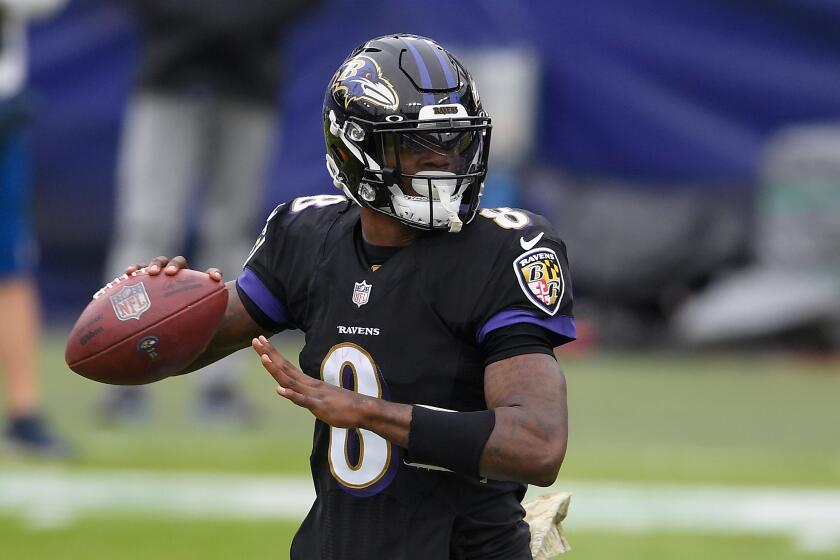Windows 8: Microsoft executives say it’s off to a ‘solid start’
Well, it’s been 90 days and one earnings call since Microsoft released Windows 8. Though the company reported it slightly beat expectations in the earnings call, it didn’t release enough detailed information to fundamentally answer the big question:
Is Windows 8 a winner or a loser?
Last week in San Francisco, I sat down with Tami Reller, Microsoft’s chief marketing and financial officer for the Windows division, and Aidan Marcuss, principal director of Windows Research. Though they didn’t disclose any new numbers, they did discuss progress so far in what Reller argues is the company’s most ambitious product reboot in almost two decades.
10 tech companies to watch in 2013
“We are just getting started,” she said. “It’s a big generational change. And it’ll take the next several seasons to get all the pieces in place.”
In other words, the true measure of whether Microsoft’s new direction will succeed won’t come for at least a couple of years. That’s because Windows 8, the new operating system released last year, is Microsoft’s first designed from the bottom up to work across all platforms: desktop PCs, tablets, smartphones, laptops.
The design, of course, is built around the idea that touch will now be the crucial feature across all these platforms. And although everyone is eager to render a fast verdict on this strategy’s progress, Reller noted that Microsoft’s first Surface tablet was only available in limited numbers last fall. The Surface Pro is headed to market soon, with richer features and wider availability. But just as important, a wider range of Microsoft partners has begun to release their own Windows 8 tablets.
Also, there were really just a few touch-enabled Windows 8 PCs and laptops available by the holidays. More than 100 varieties of laptops and PCs running Windows 8 with touch capability will flood the market in the coming months.
As I wrote about at CES, Windows 8 is enabling an explosion in innovative designs for laptops that covert to tablets. It’s also creating a whole new class of all-in-one desktops that are touch-enabled. And then there are the growing number of Windows Phone 8 devices on the market.
One notable feature of Windows 8 is that unlike Android devices, the design is consistent no matter what platform or who makes the device. Microsoft has worked closely with partners to make sure the experience is consistent, Reller said.
The company is also trying to offer better economics to attract app developers, Reller and Marcuss said. Apple keeps 30% of the revenue from its App Store. Microsoft takes the same cut, at first. But if the app becomes a hit, with at least 25,000 in sales, Microsoft will bump that percentage up to 80% to developers for the life of that app, Reller said.
The company also lets content sellers decide how they want to offer subscriptions, giving them a choice of doing it through the Windows Store or doing it directly with the customer. Apple requires them go through the App Store.
Though this is all incredibly ambitious, I noted that it’s also a huge change across a lot of products to throw at customers all at once. Marcuss said Windows 8 underwent 24 billion hours of testing with consumers to understand how people would go about learning it. The latest testing shows that it takes under five minutes to take a device out of the box and get it up and running, he said.
Rather than trying to run through long tutorials at the start, Windows 8 takes the user through a couple of steps to learn basic functions. After that, Marcuss said, it was more effective for users to learn and discover the rest themselves.
“If we show them all the new features at the start, they forget them,” he said.
So far, Microsoft has sold 60 million Windows 8 licenses, and in terms of revenue, the Windows business grew 1% in the most recent quarter, compared with the same quarter one year ago.
That’s notable considering that overall PC sales continue to decline. What hurt Microsoft last quarter, in part, was a decline in sales of Xbox consoles, but that’s another story.
Reller said the company is taking the long view with Windows 8, but that Microsoft remains convinced that the new operating system is going to open up big avenues of growth for the company and its partners by moving Windows from its dominant position on PCs to being an operating system for a broader range of devices.
“We think this is a solid start to the Windows 8 launch,” she said. “Change takes time. But we all have a shared sense of optimism and opportunity.”
ALSO:
CES 2013: How tablets are changing desktop computers
Laptops go up against tablets at Consumer Electronics Show
CES 2013: Microsoft exec makes the case for Windows Phone 8
twitter.com/@obrien.
More to Read
Inside the business of entertainment
The Wide Shot brings you news, analysis and insights on everything from streaming wars to production — and what it all means for the future.
You may occasionally receive promotional content from the Los Angeles Times.








